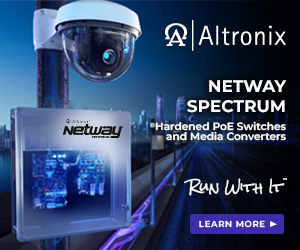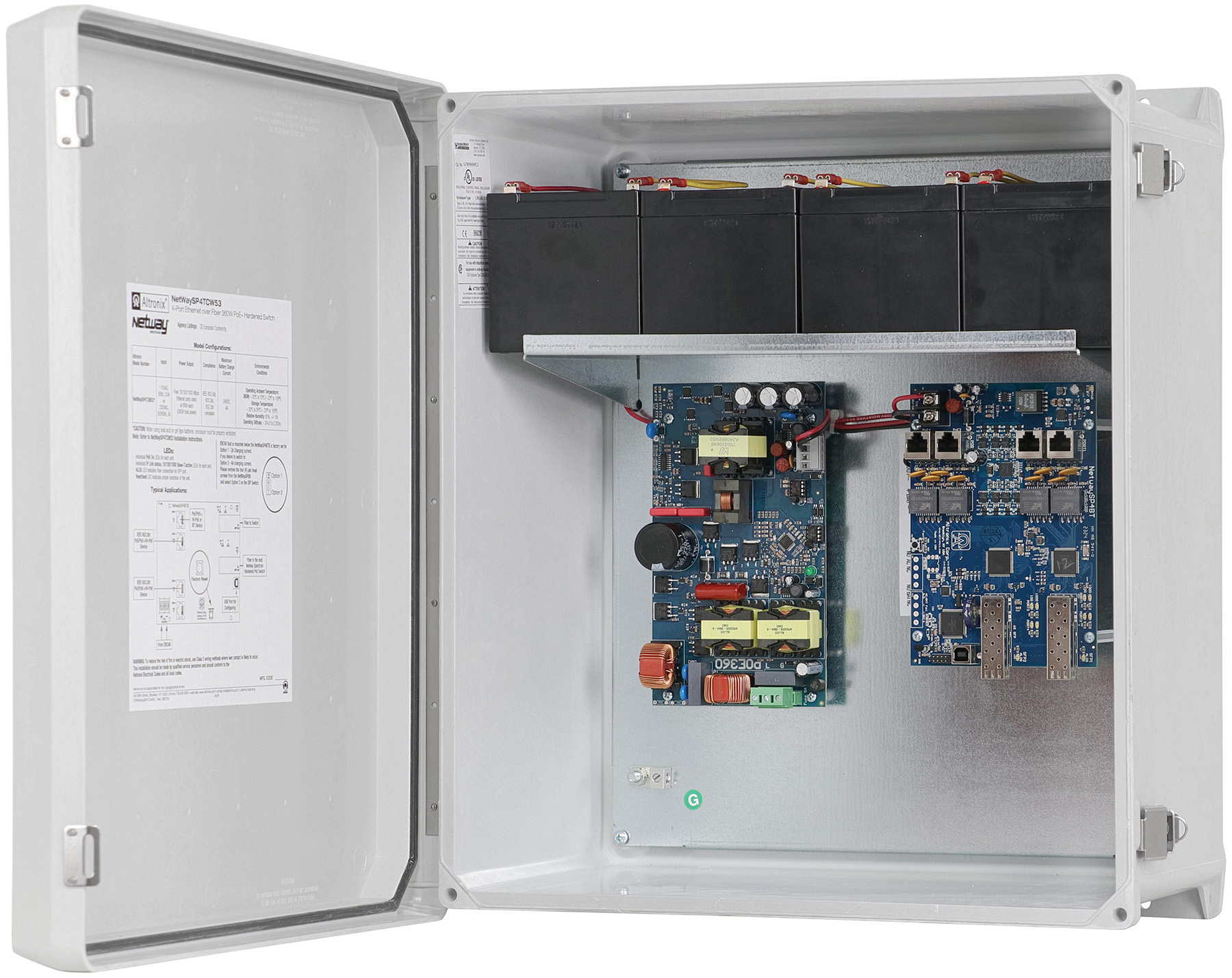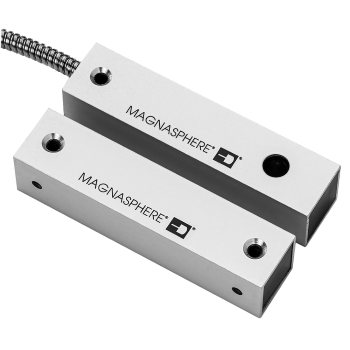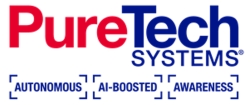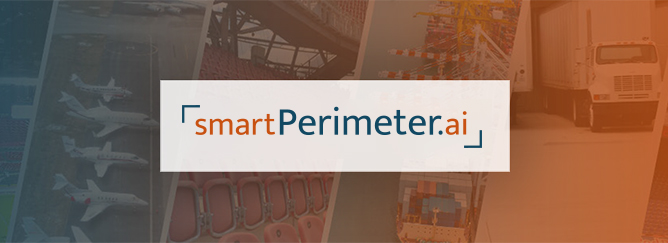dedicated to perimeter safety and security
November-December 2025 Issue
TRENDS
The smartPerimeter Trends Everyone Was Talking About at ISC East
Smart Perimeters are Arriving Just in Time!
By Mark McCourt, smartPerimeter.ai
 This year’s ISC East wasn’t just another Conference- it was the launch of the smartPerimeter.ai Safety and Security Track in partnership with SIA and ISC.
This year’s ISC East wasn’t just another Conference- it was the launch of the smartPerimeter.ai Safety and Security Track in partnership with SIA and ISC.
The dynamic discussions focused on the economic slowdown, shrinking labor pool, and growing threat landscape collided to reshape how security leaders think about perimeter protection. The Smart Perimeter is arriving just in time.
Security spending is facing a crossroads due to several factors.
- Less Investment, More Crime: Business budgets are tightening due to concerns over the economic slowdown. The problem with cutting security spending is that crime increases during recessions.
- Labor Shortage: Despite layoffs in some markets, there is a shortage of qualified security officers.
- Reactive vs. Proactive: Manual, guard-heavy programs leave organizations in a reactive posture—the most expensive and least effective model.
- New Standard: Automation paired with human intelligence is becoming the new standard, driven by measurable risk and data-backed justification.
Two education sessions stood out for charting where the industry is actually heading: risk intelligence that proves ROI, and robotics as a force multiplier.
Risk Intelligence Is Now the Strategy
The C-Suite demands data.
Mark Landry, CPP – Director of Security Intelligence, AMAROK, shared his early experience at FedEx when the head of finance said, “I understand logically that Chicago is riskier than Boise. But I need numbers,” which set him on his journey to create a reliable perimeter risk intelligence tool.
The Education Session, Risk Intelligence Is Driving Security Strategy with Proven ROI, directly addressed how AMAROK’s electric fences are being employed by security executives, such as Spencer Krupp, Senior Manager, Global Security and Resilience at ACERTUS.
Here is what attendees learned:
- Perimeter budgets now require hard numbers. Executives want geo-crime data, intrusion history, vandalism metrics, and scenario modeling that quantify probable losses and avoided costs.
- Perimeter protection is shifting from a cost center to a business case. Downtime, vandalism, asset damage, and productivity losses are being translated into real dollars.
- For buyers: Integration with analytics platforms, measurement frameworks, and proof of outcome (intrusions prevented, vandalism reduced) will be required. They are readily available, reliable, and integrate with most security systems.
- For vendors: Specs alone won’t win. ROI reporting and executive-ready dashboards and reporting are now essential deliverables to demonstrate value.
Robotics as the New Force Multiplier
The second standout session, Modernizing Perimeter Security: Leveraging Robotics as a Force Multiplier in a Constrained Labor Market, showcased a shift that would’ve been unthinkable five years ago.
- Labor shortages and rising personnel costs make it impossible to staff large campuses the old way.
- Robots now handle observation, patrol, data collection, and verification, while humans respond to validated events.
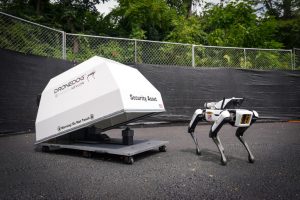 Leading exhibitors like Asylon Robotics and RBtec demonstrated ecosystems that combine LiDAR, fiber-optic sensors, and autonomous platforms. Derek Lemire, VP of Physical Security at Citizens Bank, described how their corporate campus already deploys robotic patrols and drones:
Leading exhibitors like Asylon Robotics and RBtec demonstrated ecosystems that combine LiDAR, fiber-optic sensors, and autonomous platforms. Derek Lemire, VP of Physical Security at Citizens Bank, described how their corporate campus already deploys robotic patrols and drones:
“The officers don’t work around the robotics—they work with them.”
Use cases are expanding rapidly: logistics yards, airports, campuses, and any site where scale overwhelms traditional patrols.
What This Means for 2026 and Beyond
Security programs are moving toward architectures where:
- Automation handles detection, verification, and assessment.
- Humans handle judgment, response, and escalation.
- Systems report measurable outcomes that justify the spend to the C-Suite.
Vendors and integrators who design for autonomy, interoperability, and real-time situational awareness will lead this next wave.
Visit www.asylonrobotics.com and www.amarok.com to learn more.
FEATURE
Active Shooter Defense Planning Starts at the Perimeter
Active shooter preparedness is shifting outward. For decades, most planning focused on interior hardening—locked classrooms, fortified rooms, interior alerts, and response training. But as incidents accelerate and attackers move quickly through public and semi-public spaces, organizations are rethinking where real prevention begins.
The consensus among security leaders today is clear: if the first meaningful detection happens inside the building, the defensive advantage is already gone. Modern strategies push intelligence, automation, and access control outward to the very edges of a property. The perimeter is no longer a fence line or a lobby—it is the first opportunity to understand, shape, and respond to risk.
 The Perimeter Is Now the First Point of Advantage
The Perimeter Is Now the First Point of Advantage
Active shooter events unfold faster than traditional, human-triggered protocols can respond. FBI case data shows a median law-enforcement response time of about three minutes, and in many incidents, the critical decisions that could slow or stop an attacker must occur before officers arrive.
Inside the building, the people responsible for emergency actions—locking exterior doors, making an all-call, shutting down elevators—often have little or no time to act once an assailant is inside. This exposes a structural vulnerability: any protocol that depends on human recognition and manual activation is already behind the curve.
Extending the defensive posture to the perimeter buys time: time to detect anomalies, time to verify threats, and time to intervene before an attacker reaches interior spaces. Parking lots, approach paths, garages, and transition zones are no longer neutral public areas; they are becoming intelligent observation and control points designed to slow and disrupt an attack before it gains momentum.
The Rise of Predictive Perimeter Intelligence
Traditional systems identify threats once something has already happened: a forced door, a triggered camera analytic, a shot fired. Modern AI-driven platforms reverse that approach.
Davista is finding that advanced analytic engines are now correlating data across multiple systems—video metadata, access control logs, LPR reads, IoT sensors, PIDS activity, environmental cues, and operational patterns—to identify deviations from the established baseline. These deviations often represent the earliest indicators of pre-operational planning, reconnaissance, or emotional escalation.
Davista’s CEO Scott Sieracki describes the shift bluntly:
“For years, security teams have been reacting to what already occurred. The real evolution is using data to understand what is forming—not after the fact, but as it emerges. When you can see patterns before they escalate, you fundamentally change the timeline of defense.”
In schools, this can mean identifying behavioral trends or distress signals long before they surface as crisis events. In healthcare and government facilities, it may involve detecting unusual access attempts, repeated presence near restricted zones, or anomalies in movement patterns.
The value isn’t simply the alert itself. Predictive systems can also direct officer patrols, adjust camera tours, escalate awareness, and prime building controls before an incident unfolds. This is how the perimeter becomes a proactive shield rather than a static boundary.
Automation When Every Second Counts
Once violence begins, speed becomes the defining factor. Human response—even from trained personnel—is limited by recognition time, communication delays, and the chaos of the moment. Automated gunshot detection closes that gap by validating gunfire instantly and triggering protective actions without waiting for human interpretation.
Shooter Detection Systems (SDS) applies a dual-mode design—acoustic detection of the muzzle blast paired with infrared confirmation of the muzzle flash—to verify gunfire in under a second. This military-derived approach dramatically reduces false alerts and maintains accuracy both indoors and in open-air perimeter environments, where reflections, shockwaves, and environmental noise typically challenge conventional systems. The system processes all data at the edge, with no audio leaving the sensor, preserving user privacy while accelerating confirmation.
“False gunfire alarms cause chaos with law enforcement and can be very harmful for a brand in the media. Our dual-mode sensors give 99.9 percent accuracy with less than one false alert per five million hours, which is critical for maintaining trust during a live incident,” said James Reno, Vice President of North America Commercial Sales at SDS.
Once a shot is confirmed, SDS immediately activates pre-programmed workflows: automated elevator lockdown, zone-based notifications, camera call-ups, access-control actions, mass-notification triggers, and real-time intelligence sent directly to first responders. In past incidents, attackers advanced from lobbies into upper floors because the person responsible for shutting down elevators was killed or unable to act. Automated systems eliminate that vulnerability by initiating protective actions in the first second of an attack without relying on on-site personnel to trigger them.
SDS has also extended this accuracy outdoors to the perimeter, where many attacks now begin. In a recent case study, the system detected a drive-by shooting targeting a facility, pinpointed the shooter’s distance and direction of travel, and generated timestamps that helped law enforcement correlate video feeds and ultimately apprehend the suspect. The event validated SDS’s dual-sensor approach in challenging outdoor environments, where accurate detection is essential to shaping an early response.
Detection is instantaneous, but coordination is everything. Automated gunshot validation provides the first signal; predictive intelligence determines what happens next. That second layer is where Davista’s Heimdall platform can affect the outcome.
From Detection to Coordinated Response
Gunshot detection delivers the first, critical signal, but facilities also need the intelligence that connects that alert to action. That’s where platforms like Davista’s Heimdall change the equation.
Heimdall doesn’t just flag a perimeter anomaly; it interprets it. When the system detects something out of pattern—an unauthorized vehicle lingering near a restricted bay, an unusual motion sequence on cameras, or a cluster of sensor hits that suggest coordinated probing—it immediately evaluates severity and confidence using contextual data from video metadata, LPR reads, access control, and PIDS.
From there, Heimdall’s orchestration layer can initiate tiered, pre-verified workflows:
- Escalating alerts to the right command center
- Re-routing patrols using AI-driven officer tours
- Triggering camera tours or changing camera sequences
- Pushing real-time notifications to on-scene personnel via SMS, email, or radio integrations
Because the platform is designed for situational convergence, it doesn’t act in a silo. Heimdall syncs with existing VMS, CAD/RMS, access control, and mass-notification platforms to automate protective steps—securing entry points, locking down zones, or initiating inter-agency coordination when thresholds are met. Every action is logged and time-stamped to support after-action review and compliance.
The outcome is a closed, real-time loop: detection, interpretation, orchestration, deployment. Data doesn’t just inform the response—it drives it.
Entrances as the Decisive Control Point
Predictive intelligence and automated detection provide early awareness, but the secure entrance determines the outcome at the threshold.
Entry architecture has become an influential factor in active-shooter defense. Modern secure entrances integrate identity verification, access control, biometrics, and forced-entry resistance into a single decision point. Organizations using solutions from companies like Boon Edam deploy security revolving doors, mantrap portals, full-height turnstiles, and optical turnstiles to enforce one-person-at-a-time entry and eliminate tailgating and piggybacking.
These entrance systems create:
- Controlled transition zones between public and restricted spaces
- Verified authentication through cards, PINs, or biometrics
- Chokepoints that regulate flow and prevent mass entry
- Lockdown-ready vestibules with remote control capabilities
- Delays that buy critical seconds during forced-entry attempts
“A secure entrance isn’t just a doorway, it’s a decisive control point. When identity verification, flow control, and forced-entry resistance all converge at a single threshold, you create a protective layer that meaningfully limits unauthorized entry.” – Amanda Powell, Boon Edam USA
Real-world deployments in police departments, municipal buildings, and government facilities demonstrate how layered entry architecture can deter armed intrusion or slow it long enough for response teams to intervene. After the Dallas Police Department shooting and at the Offenbach Police Headquarters in Hesse, Germany, security revolving doors and high-security portals were installed specifically to strengthen this critical interior line of defense.
This blend of architecture and technology is shifting how organizations think about the entrance itself. Amanda Powell, Marketing Manager at Boon Edam USA, explains: “A secure entrance isn’t just a doorway, it’s a decisive control point. When identity verification, flow control, and forced-entry resistance all converge at a single threshold, you create a protective layer that meaningfully limits unauthorized entry.”
Additionally, ballistic-resistant glazing, hardened frames, overhead sensors, and automatic locking mechanisms turn the entrance into both a physical and procedural barrier, while still supporting smooth daily operations.
The Convergence Gap
Most organizations already have strong individual components: cameras, access control, intrusion sensors, panic buttons, elevator controls, radios, and communication systems. But they often operate in silos, generating isolated signals without a unified perspective.
The new perimeter model requires convergence.
A modern defensive posture integrates:
- Predictive analytics to identify early-stage anomalies
- Automated gunshot detection to validate violence instantly
- Secure entrances to regulate, verify, and delay access
- Unified communication platforms that orchestrate workflows
- Real-time visualization tools that show threat evolution
The advantage comes from the loop operating as one system rather than many. When these components work together, organizations gain the most valuable commodity in an attack: time.
Where Perimeter Strategy Is Evolving Next
Several emerging capabilities could reshape perimeter defense in the coming years:
- Predictive intent modeling that evaluates why behaviors are forming
- AI-driven situational awareness that merges video, LPR, IoT, and access data
- Wireless, edge-processing sensors that deploy easily across large or distributed properties
- Fusion with complementary technologies such as weapons detection, drone detection, and outdoor gunshot detection
- Identity-first access control centered on biometrics
- Entrance designs that balance sustainability with high-security performance
- Automated orchestration capable of initiating protection sequences without human delay
Each of these advancements strengthens the same objective: recognizing risk earlier, automating faster, and controlling access more effectively at the perimeter.
The Perimeter Is Now the Beginning of Defense
Active shooter planning no longer starts at the lobby or the classroom door. It begins at the outer edges of a property, where organizations can detect pre-incident behaviors, automate life-saving responses, and control who enters, and who doesn’t.
- Predictive intelligence gives foresight.
- Automated detection provides speed.
- Secure entrances determine outcomes.
Together, they make the perimeter the most decisive layer of modern active shooter defense.
By Heather Martin with insights from Davista, Boon Edam, and Shooter Detection Systems
5 Questions With…
Denny Crowley – Chief Growth Officer, Asylon Robotics
The New Era of Automated Security Operations
Security robots first appeared around 2015, but most early platforms didn’t live up to the promise. Limited mobility, clunky software, shallow integrations, and high friction made them interesting, but not operationally useful. Asylon has taken a different path, evolving from drone automation to a fully managed robotics service built on advanced software, quadruped mobility, and remote operations expertise. In this conversation, Asylon Chief Growth Officer Denny Crowley explains what changed, why data is becoming a force multiplier, and why 2026 may finally be “the year of the drone.”
The New Border Mission: Identity First at America’s Air, Land, and Sea Ports
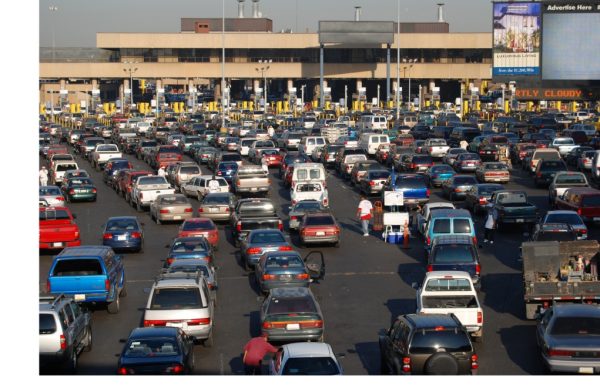
The U.S. border is undergoing a fundamental shift, moving from traditional “fence defense” to what can only be described as identity defense. Physical perimeters still matter, but the real security posture now hinges on verifying who a person is before they ever step onto American soil. It’s a model increasingly defined by automation, biometrics, and real-time identity intelligence—and it’s already reshaping how U.S. Customs and Border Protection (CBP) manages the vast volume of people who enter the United States every day.
For perspective: the U.S. maintains more than 100,000 miles of coastal, desert, and wilderness border—enough to wrap around the planet four times. Yet we channel all official entries through more than 300 air, land, and sea ports. These choke points depend on fast, accurate verification at scale, and the federal strategy is shifting accordingly.
CBP’s IT Strategy 2024–2028 calls for technology that “enhances the verification and vetting of all persons.” Biometrics—face, fingerprint, iris, and voice—are now the universal credential, enabling identity to be detected rather than merely presented. Digital travel records, mobile credentials, watchlist data, and behavioral analytics all feed into a multi-factor identity model that produces trusted, real-time decisions.
The question, then, is simple: What does identity-first border security actually look like across America’s air, land, and sea ports, and how close are we to full adoption?
Air Borders: Automation Meets Identity
Air ports of entry are where the identity-first model is the most mature. For the one million travelers processed each day, CBP’s systems increasingly rely on biometrics—face, fingerprint, and iris—as the primary credential. The traveler is the credential, and the shift is now fully visible to the public.
REAL ID enforcement at TSA (May 7, 2025), the emergence of mobile driver’s licenses in digital wallets, and CBP’s expanding biometric entry/exit program have accelerated the move toward touchless, automated identity verification. Travelers now step into an environment where identity is detected in real time, not presented through paper documents or plastic cards.
This has also changed how physical security systems are designed. Cameras, sensors, and access control readers inside airports are no longer just situational-awareness tools—they’re identity acquisition points tied into federal databases, watchlists, and analytics platforms that deliver instant, high-confidence matching.
The air domain is effectively the proving ground. After more than 15 years of refining biometric passenger screening, airports now operate identity systems that can securely process massive volumes with minimal friction. Those same capabilities are beginning to migrate outward to land and sea environments where identity capture has historically been slower and far more difficult.
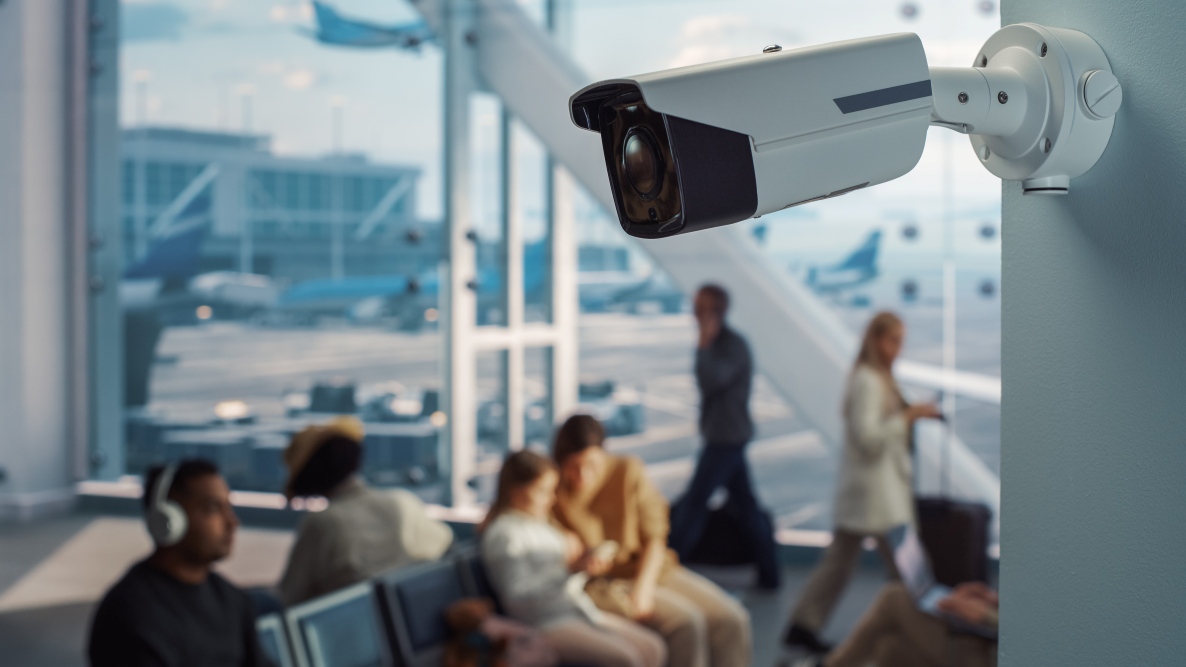
Land Borders: Facial Recognition in Motion
Roughly 675,000 people and 300,000 vehicles cross the U.S. land borders with Canada and Mexico each day—two-thirds of all daily entries. Land ports face the toughest identity-capture conditions of any border environment: inconsistent lighting, windshield glare, varied skin tones, motion blur, driver behavior, and hardware limitations that make it difficult to capture high-quality images.
That challenge will soon be paired with a major policy shift: DHS has finalized a rule requiring facial biometric collection from all non-U.S. citizens—including Canadians—beginning December 26, 2025. CBP will photograph travelers at land borders just as they do at airports, and anyone who refuses may be denied entry.
That’s why CBP is investing heavily in automation. Pilot programs in Buffalo, Detroit, and El Paso show that vehicle-based facial recognition now works reliably at scale, even under real-world traffic patterns. At the Peace Bridge between New York and Ontario, AI-driven cameras achieved 90%+ match rates during live operations, prompting expansion to additional ports.
Today’s AID2entry stack at land borders includes near-infrared (NIR) cameras that cut through glass glare, real-time face matching via networked inspection booths, and the ability to link license plate data, driver biometrics, and travel documents into a single identity profile.
What’s next is even more transformative: mobile inspection vehicles, surveillance towers with radar/LiDAR and integrated biometrics, and “intelligent towers” that combine movement detection with face or body recognition. Early deployments in Arizona and New Mexico already demonstrate this blended surveillance–identity model. Ruggedized biometric kits are also being fielded in remote areas, where agents need portable, durable identity tools that work far from fixed infrastructure.
Sea Borders: Biometric Awareness on the Waves
Maritime environments create some of the toughest identity challenges for DHS, CBP, and the U.S. Coast Guard. Cruise terminals must process thousands of passengers in tight windows, while cargo crews arrive from dozens of nations with inconsistent documentation.
To streamline cruise traffic, DHS is expanding biometric screening at sea entry points. Passengers are enrolled via facial capture before disembarkation, checked against watchlists and travel records, and re-verified when they return to the ship, creating a fast, closed identity loop.
Cargo and crew vetting runs through the Coast Guard’s Maritime Domain Awareness (MDA) framework, which fuses satellite and radar feeds with vessel registry data, crew lists, and behavioral analytics. Each ship approaching U.S. waters is assigned a digital identity profile long before it reaches port.
Effective identity at sea depends on resilient, networked sensors—coastal radar, long-range cameras, and command platforms that link vessel movement with biometric and credential data. When maritime intelligence and biometrics converge, authorities can verify who is on board well before a ship docks at the pier.

“A person trying to conceal their identity doesn’t bring travel documents. That’s why Border Patrol relies on biometrics—not credentials—to establish who someone really is.”
Identity Fusion Is the New Perimeter
Multi-modal fusion identity intelligence blends biometric, digital, behavioral, and contextual signals into one fast, high-confidence verification process. At air, land, and sea ports, this approach is already driving faster throughput, higher accuracy, and a frictionless AID2entry experience.
For integrators, consultants, and smart perimeter leaders, the implications are clear: identity is becoming part of the perimeter. Credentials are shifting from physical cards, PINs, and QR codes to mobile and biometric authentication. Cameras and sensors are evolving into identity-acquisition endpoints, and access control is moving from a simple badge swipe to a real-time identity decision.
And the border itself is entering a new phase. As defense and identity converge, the U.S. is becoming what I like to call, “Defentified” (Defense + Identified), a blended approach where perimeter systems and identity intelligence work as one.
What Security Leaders Must Solve Next
As AID2entry systems move beyond federal borders and begin shaping corporate campuses, critical infrastructure, and enterprise access programs, new questions emerge:
- How do we deploy identity and access systems responsibly and transparently?
- How do we communicate trust and consent to U.S. travelers, and tomorrow, to employees?
- How do we design mobile, touchless, frictionless access that identifies a person, not just a device in proximity?
- And the biggest question: how will we monetize identity intelligence as a product or as an ongoing service?
The U.S. border is already becoming Defentified. The same identity-driven methods that have proven themselves at air, land, and sea ports will soon influence how we secure campuses, workplaces, high-value assets, and the organizations we protect.
For the physical security industry, the opportunity—and responsibility—isn’t approaching. It has arrived.
And yes, keep your passport, ID, and keycard in your bag for now… just in case the future takes one more year to fully catch up.
By Doug OGorden
Top Companies Serving Ports
The Perimeter Problem Water Utilities Can’t Ignore
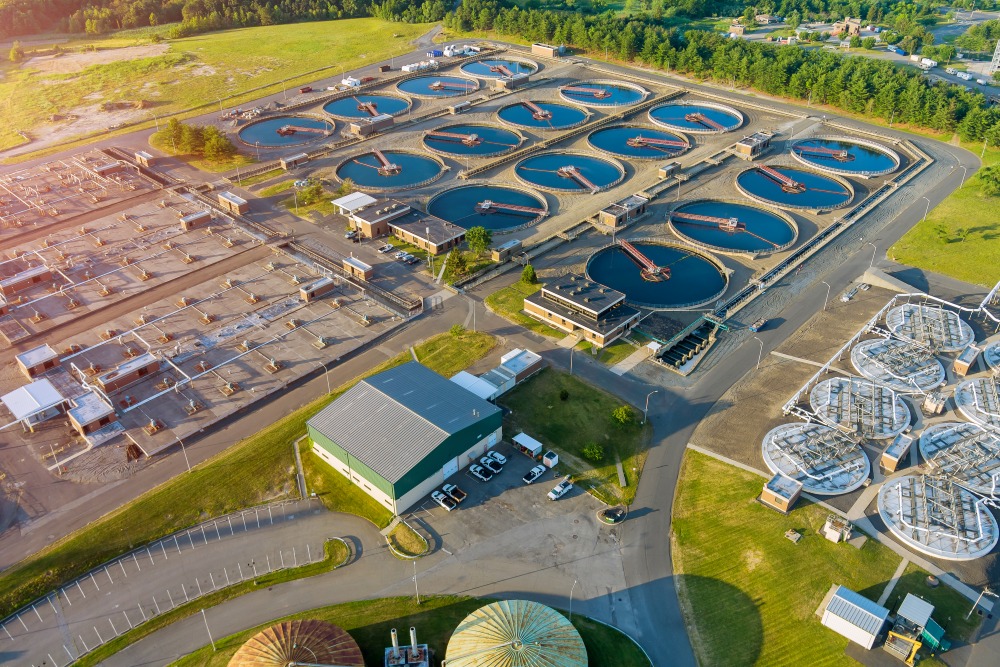
U.S. drinking-water and wastewater plants are increasingly attractive targets. Most operate with small teams, oversee wide networks of remote sites and lift stations, and rely on infrastructure that was never designed to withstand modern security pressures.
Threat actors understand these gaps.
So do opportunistic thieves, vandals, and politically motivated intruders. The result is a steady rise in perimeter breaches and cyber-physical incidents that disrupt operations, damage equipment, and undermine public confidence. The public impact—and the economic fallout—can escalate quickly.
It’s not cyberattacks putting plants at risk.
It’s something far simpler.
Recent break-ins illustrate how easily intruders can exploit weak perimeter protection:
Perimeter Breaches and Vandalism
In April 2025, suspects broke into a water purification plant near Houston (Cypress, TX), causing more than $40,000 in equipment damage. Although alarms triggered a law enforcement response and video captured the suspects, they have not been identified. Investigators believe the incident may be connected to similar break-ins at nearby facilities.
Direct Tampering at Smaller Facilities
After a break-in at a Michigan water plant in July 2024, officials were forced to issue a Do Not Drink advisory. “It’s very scary because it’s your water system,” said Sylvan Township Department of Public Works Supervisor Robert Scull. “It’s got to be as secure as possible.” The intruders changed the controls and circuit breakers, altering both the water valves and the scale that weighs the chemicals added to the water.
What These Break-ins Really Reveal
- Remote sites remain the softest targets. Lift stations, booster stations, and remote storage tanks often lack meaningful perimeter protection. Many have minimal fencing, no intrusion detection, and limited or outdated video coverage. These sites are easy to access, and “security theater” measures offer little real deterrence.
- Insider and contractor exposure is underestimated. Keys, badges, vehicle gates, warehouse cages, and contractor access points are part of the perimeter. Weak identity management and inconsistent access control practices extend the attack surface. A secure program requires strong identity, credentialing, and surveillance—both at the plant and across all remote assets.
- Alarms only work if someone responds. Water facilities commonly rely on alarms that trigger when rooms are empty or sites are unmanned. Without real-time monitoring and verification, alarms become background noise. Detection without response is effectively no security at all.
How Utilities Can Close the Perimeter Gap
There are national guidelines and minimum requirements for securing water and wastewater facilities, but minimum standards rarely stop determined intruders. Utilities need practical, layered measures that address today’s real-world risks.
The American Water Works Association provides two foundational resources:
- AWWA G430 Security Practices for Operation & Management, which outlines baseline security program requirements.
- AWWA J100 Risk & Resilience Management, an all-hazards framework that helps utilities prioritize investments when budgets are tight.
- AWWA G430 (Security Practices for Operation & Management) sets minimum requirements for a protective security program across water/wastewater.
- AWWA J100 (Risk & Resilience Management) gives an all-hazards method to prioritize spend—critical when budgets are tight.
Standards set the floor—not the ceiling. Utilities still need to apply them through targeted perimeter measures that actually reduce risk.
1) Strengthen the Perimeter: Deter, Detect, Delay.
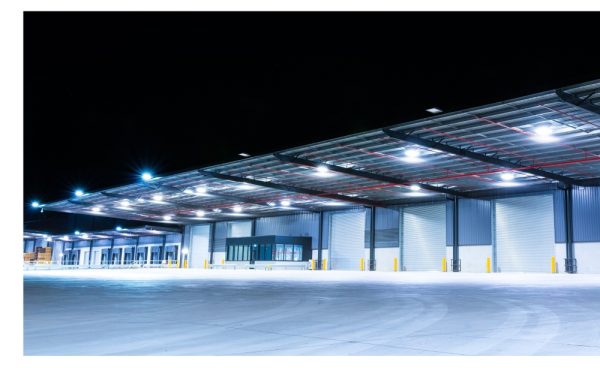 Fencing and Gates: Upgrade from basic chain-link to anti-cut/anti-climb fabric where risk justifies it; lock down vehicle gates and utility yards.
Fencing and Gates: Upgrade from basic chain-link to anti-cut/anti-climb fabric where risk justifies it; lock down vehicle gates and utility yards.- Perimeter Intrusion Detection: Cover the full run—not just the driveway—with fence-mounted vibration/fiber sensors, buried line, or microwave/RF/radar where terrain demands. Ensure redundant power on sensors.
- Imaging That Works at 2 AM: Thermal or low-light cameras with analytics focused on human targets (not raccoons), set to trigger talk-down audio and lights.
- Lighting and CPTED: Use uniform illumination, clearly defined zones for indoor/outdoor fences, trimmed vegetation, and visible signage to reduce nuisance incursions.
- Alarms: Don’t go cheap. Invest in a smart system that filters nuisance triggers from verified alarms. It will pay for itself in reduced manhours and law enforcement rolls.
2) Control Access Like It Matters.
- Keys, Cards, and Cabinets: Tighten badge issuance, vehicle gate lists, and padlock/HASP control for chemical rooms, PLC panels, and electrical switchgear.
- Contractor Governance: Vet, train, and monitor vendors; require sign-in/out and escorted access at remote sites; log who accessed what and when.
- Warehouse & scrap controls: Cage high-value copper and wire, serialize, and audit against work orders; add video with License Plate Recognition (LPR) at warehouse yards.
3) Cover the Lonely Assets.
- Lift Stations and Tanks: Apply plant-level rigor even at small facilities. This means secured enclosures for panels, door contacts, vibration sensors, and cellular video tied to a central SOC or contracted GSOC.
- Rapid Verification: Use audio talk-down and strobe activations that reduce false dispatches and deter trespassers quickly.
What’s Next: Where Water Security Goes From Here
Perimeter breaches aren’t anomalies—they’re warnings. Utilities operating with aging infrastructure and expanding remote footprints can’t rely on physical security alone, and cyber tools alone won’t close the gap.
The future is convergence. Physical, cyber, and operations teams share intelligence, align on risk, and treat the perimeter as both physical and logical.
Utilities that move now will reduce incidents, protect service continuity, and strengthen public trust. Those that don’t will keep learning at the worst possible moment—after the next breach.
The Rising Threat to Police, Fire and 911 Facilities
As attacks increase and infrastructure ages, public safety buildings face a new class of risks, with real consequences for communities when they aren’t built to critical infrastructure standards.

Superior physical security for police, fire, EMS, and 911 facilities isn’t optional. These buildings are critical infrastructure. If a station is compromised, taken offline, or forced into lockdown, the community it serves immediately absorbs the impact—from delayed response times to cascading crisis-level failures.
And the threat environment surrounding first responders is shifting fast.
Ambush-style attacks on law enforcement continue to rise. In just the first seven months of 2025, 56 U.S. officers were shot in 45 ambush attacks. In Hillsborough, Calif., a police officer was ambushed and shot in what was believed to be a secure department parking lot. Fire stations aren’t immune either. San Jose’s Fire Station 8 has been hit with repeated break-ins and facility breaches.
Location. Location. Location. Site Selection Now Carries Real Operational Risk
Every new or renovated public safety facility requires a hard look at the power grid, internet, and cellular service levels and redundancy. The location should also be assessed for exposure to environmental or man-made hazards that could make the building unavailable when it’s needed most. Public safety is now being treated like the critical infrastructure it is. This shift is reshaping design decisions, access control strategies, technology deployments, staffing policies, and the operational culture inside agencies.
Strengthening the Foundation: Design and Policy
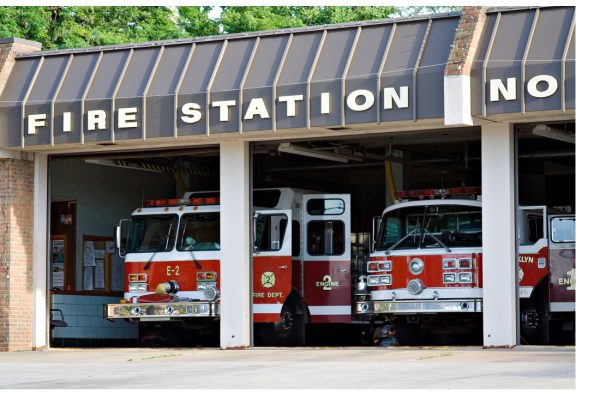 The most resilient police, fire, EMS, and 911 facilities begin with decisions made long before the walls go up. Design and policy are the first line of defense. Poor choices at this stage can’t be fixed with cameras or access control later.
The most resilient police, fire, EMS, and 911 facilities begin with decisions made long before the walls go up. Design and policy are the first line of defense. Poor choices at this stage can’t be fixed with cameras or access control later.
Guidance from 911.gov is clear: Public safety answering points shouldn’t sit next to highways, rail lines, or other corridors where a single hazmat crash could shut down the very teams needed to respond. Fire station design recommendations from USFA and similar authorities are equally blunt—maintain controlled public access, preserve clear sight lines, separate public and secure zones, and physically isolate staff parking.
But policy has as much influence on security as concrete and steel. Agencies with strong programs:
- Enforce strict key and card issuance procedures
- Maintain detailed visitor and contractor management requirements
- Define access zones—public, controlled, secure—and stick to them
- Treat identity and credentialing as both physical and cyber controls
These early-phase decisions shape everything that follows. When design and policy work together, agencies reduce risk before the first badge is issued or the first camera goes live.
Securing the Perimeter and Parking
The highest-risk, most routinely neglected area is the exterior. Most attacks or intrusions begin at the fence line, gate, lot, or door.
Forward-thinking departments now restrict staff parking to fenced compounds with anti-climb barriers, controlled gates, and no direct pedestrian access from public areas. Lighting and sight lines are treated as mission-critical, eliminating hiding spots and reducing opportunities for ambush. Structured maintenance programs ensure that exterior barriers are properly in place, working, and repaired quickly when needed.
Vehicle barriers, bollards, and controlled-approach design features prevent ramming attacks and keep threats farther away from the building envelope. It’s not flashy—but it works.
Hardening the Entrances
A modern station entrance isn’t a glass vestibule with a buzzer. It’s a layered, intentional security system designed to slow, screen, and control movement from the moment a visitor steps inside.
Contemporary layouts eliminate the “straight shot” from the public door to secure corridors. Lobbies are separated from operational areas by secured doors, turnstiles, or even interlocking or revolving security portals tied directly to access control. Walk-in areas, interview rooms, and service windows are designed to keep visitors contained and observable at all times.
Fire and EMS stations are tightening up their own entrance vulnerabilities, especially around apparatus bays, living quarters, and gear rooms, where intruders once had too many opportunities to slip inside. Cameras, intrusion sensors, controlled access, and enforced door policies provide a level of safety for the stakeholders, a deterrent against intruders, and security resilience, ensuring uptime.
The guiding principle: No one should ever move from a public area to a secure area unseen, unverified, or unchallenged.
Building the Modern Perimeter Tech Stack
The fence and gate are no longer the only line of defense. Modern public safety agencies are deploying full perimeter detection ecosystems—a blend of sensors, analytics, electrified deterrence, access control, and intelligent video—to identify and stop threats before they reach the building envelope. What was once “nice to have” has become baseline infrastructure.
Across the industry, several vendors are shaping what effective perimeter protection looks like. The following companies illustrate the core layers many departments now deploy.
Senstar: Offers an integrated intrusion detection sensor and video assessment product portfolio to create situational awareness at the perimeter and identify threats before they reach the front door.
AMAROK: The tagline “Nothing Stops Crime Like an Electric Fence” is accurate. The product is excellent for securing restricted parking areas, laydown yards, and facilities after hours. The 7000-volt safe but memorable shock is a powerful deterrent against intrusion.
DKS Doorking: The company sets the standard in access control. Its innovative lineup includes telephone entry systems, card readers, keypads, RF transmitters, and multi-door access solutions, plus a wide range of gate operators and traffic control devices.
Hanwha Vision security cameras provide a clear view of your property in real time. When integrated with motion sensors or alarms, security cameras help identify unusual activity and send immediate alerts to your team. For a good overview on perimeter security, visit their blog: Understanding Perimeter Security | Hanwha Vision
A Roadmap for Agencies
The best-performing agencies don’t start with gadgets—they start with a plan. A phased roadmap prevents money from vanishing into one-off fixes and ensures each investment actually moves the facility toward resilience.
When the Station Becomes the Target
Communities assume their police, fire, EMS, and 911 buildings are hardened, resilient, and ready. Too often, the reality doesn’t match the expectation. The tools exist, and the leaders in the perimeter industry are already delivering the technologies used to protect these facilities.
The uncomfortable question for agency executives is this: are you willing to apply the same rigor to your own house that you demand from the critical infrastructure you protect?
If not, the next “security failure” headline might have your station’s address on it.
Summary:
Communities depend on emergency services to be available constantly and continuously. Often, the very foundations they rest on are overlooked and underplanned, leaving unmitigated risk and weak resilience. Municipalities recognize the importance of investing in service availability and uptime, public safety, and secure facilities and assets.
NEWS FROM THE EDGE
ALCEA Appoints Jeff Slaughter as Head of Business Development for the Americas
ALCEA, an ASSA ABLOY company, has named industry veteran Jeff Slaughter as Head of Business Development, bringing more than 20 years of experience in integration, enterprise security, and national account leadership. Slaughter will drive channel growth across critical infrastructure markets and support the North American rollout of ALWIN, ALCEA’s unified security management platform that integrates access control, intrusion detection, video, visitor management, and key management. Read the full release here.
Hanwha Vision Unveils New Cloud, AI, and Design Tools at ISC East 2025

Hanwha Vision highlighted major updates across its surveillance ecosystem at ISC East, including the debut of OnCAFE, a cloud-based access control platform, and OnCloud, its direct-to-cloud VSaaS solution. The company also showcased the next-generation Wisenet 9 SoC with advanced AI analytics and FIPS 140-3 Level 3 cybersecurity, along with DesignPro, a unified project design and management tool for integrators. Read the full release here.
Milestone Showcases Global AI Innovation with Early Access to New Vision Language Model

Milestone Systems invited 55 developers to preview its upcoming NVIDIA-powered Vision Language Model, trained on 75,000 hours of ethically sourced video, during the Milestone Developer Summit in Copenhagen. The Hafnia Hackathon spotlighted new smart-city integrations built on the VLM API, with top honors going to “Ask The City,” a real-time, privacy-aware video query tool. Milestone also previewed a generative-AI plugin for XProtect that converts video into summaries, reports, and validated alerts. Read the full release here.
OpenEye Introduces Active Deterrence with New 4MP Turret Camera

OpenEye added active deterrence to its OWS platform, enabling cameras with white light LEDs to automatically illuminate on motion, analytics, or sensor-driven alerts. The new OE-C1018T4 4MP mini-turret supports strobe or solid modes, integrates with Virtual Arm/Disarm, and pairs LED activation with two-way audio to help interrupt suspicious behavior before escalation. Read the full release here.
PRODUCT / COMPANY SHOWCASE
The Altronix NetWaySP4TCW53 is a 4-port hardened PoE switch in a NEMA 4/4X, IP66-11 rated enclosure, delivering up to 60W per port (240W total). Equipped with the EBC48 rapid battery charger, it ensures 24/7 uptime by leveraging lighting circuits with seamless battery backup. Embedded LINQ™ Technology enables remote monitoring, control, and diagnostics.
The Dortronics CleanWave Touchless Switch provides reliable, hands-free operation with a simple wave. Using advanced microwave sensor technology, it ensures high detection accuracy with an adjustable range of 4–24 inches. Designed for sanitary environments, it features a gasketed faceplate, IP54 rating, and selectable output hold times (0.5–30 seconds). Ideal for cleanrooms, healthcare, biolabs, and food processing, CleanWave withstands harsh conditions indoors and outdoors. It seamlessly integrates with electronic locks, automatic door openers, and access systems, offering a durable, hygienic solution for modern access control in demanding settings.
Magnasphere revolutionized door protection with the first major advancement since the 1930s reed switch. Its patented, award-winning technology sets new standards for high-security performance and offers a more reliable, cost-effective alternative to traditional reed switches. Magnasphere Motion, powered by Inxpect radar, eliminates false alarms, while its motion-sensing platform, panic switch, and anti-climb fence system deliver advanced, connected security solutions for modern protection needs.
PureActiv® is an Autonomous Perimeter Protection Software featuring patented Geospatial AI-Boosted Video Analytics. It enhances security by using advanced machine learning to reduce false alarms from sensors and cameras while integrating seamlessly with existing systems. PureActiv® provides real-time intruder tracking, automated detection, and geospatial visualization for superior situational awareness. Its extended detection range cuts infrastructure costs by up to 30% and supports flexible deployment across edge, server, and cloud environments.








